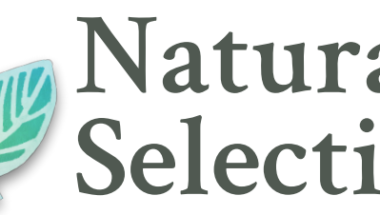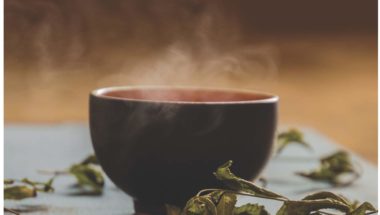Garlic as medicine has a long history in civilizations all over the world, including ancient Egypt, China, and Greece. Nicknames for the herb are plentiful—stinking rose, nectar of the gods, and prince of herbs to name a few—and during World War II it was referred to as “Russian penicillin”. Though now a common kitchen staple, garlic has traditionally been used as treatment for a myriad of health problems. An Indian proverb claims, “garlic is as good as ten mothers”, referring to its ability to treat a wide range of diseases. Here are three important reasons to include garlic in your regular diet:
- Garlic boosts the immune system. The most well known use for garlic may be its ability to help the immune system fight off infection. Evidence shows taking a daily garlic supplement can help prevent the common cold and hasten recovery if sickness does occur. Garlic aids in killing bacteria, viruses, fungi, and parasites, so it can be used for virtually any kind of infection in the body.
- Garlic benefits heart health. Eating garlic positively impacts cardiovascular health in a variety of ways. A meta-analysis of studies on garlic has shown that supplementation with garlic decreases total cholesterol, low-density lipoprotein cholesterol, and triglyceride levels in the blood. It has also been shown to treat atherosclerosis by preventing artery-clogging plaque formation and removing pre-existing plaques. Garlic may also help lower blood pressure in those with hypertension.
- Garlic protects against cancer. Studies show garlic consumption is associated with a reduced risk of several types of cancers, including breast, pancreatic, stomach, colon, and esophageal cancers. Sulphur compounds in garlic help prevent the disease through a variety of mechanisms that may include antioxidant action to reduce cell damage, increased DNA repair, inhibition of cancer-causing substances, and induction of cancer cell death. Garlic is best eaten chopped or crushed for maximum health benefits. Air exposure releases alliinase, an enzyme that converts alliin to allicin, which is the chemical responsible for most of garlic’s beneficial effects. Evidence favours raw garlic to cooked for similar reason: heat prevents alliinase from forming allicin, which decreases garlic’s health benefits. One study showed cooking the herb prevented its inhibitory effects on cancer cells. However, crushing the garlic and exposing it to air for ten minutes before cooking preserved its anti-cancer properties entirely.
Tips for the Kitchen: If you prefer cooked garlic, first chop or crush it, then let stand for a few minutes to allow alliinase activity prior to heat exposure. Raw garlic can be added to your cooked meal, crushed into homemade salad dressing, added to guacamole and pesto, mixed with butter to make garlic toast, or chopped and swallowed.
References:
American Chemical Society (2007). Recipe For Healthy Garlic: Crush Before Cooking. ScienceDaily. Retrieved from www.sciencedaily.com/releases/2007/02/070220034516.html.Challier,
B., Perarnau, J.M., & Viel, J.F (1998). Garlic, onion and cereal fibre as protective factors for breast cancer: a French case-control study. European Journal of Epidemiology, 14(8), 737-747.
Chan, J.M., Wang, F., & Holly, E.A. (2005). Vegetable and fruit intake and pancreatic cancer in a population-based case-control study in the San Francisco bay area. Cancer Epidemiology, Biomarkers & Prevention, 14(9), 2093-2097
Essential Medicines and Health Products Information (1999). WHO Monographs on Selected Medicinal Plants: Bulbus Allii Sativi. Volume 1. Retrieved from http://apps.who.int/medicinedocs/en/d/Js2200e/4.html.
Josling, P. (2001). Preventing the common cold with a garlic supplement: A double-blind, placebo-controlled survey.Advances in Therapy, 18(4), 189-193.
Los Angeles Biomedical Research Institute at Harbor-UCLA Medical Center (2016). New study shows aged garlic extract can reduce dangerous plaque buildup in arteries: Supplement can help prevent progression of heart disease. ScienceDaily. Retrieved February 27, 2019 from www.sciencedaily.com/releases/2016/01/160121122158.htm
Marciano,M. (2015). Allium sativum. Retrieved from https://thenaturopathicherbalist.com/2015/09/10/allium-sativum/. Meyers, M. (2006). Garlic: An herb society of America guide. The Herb Society of America. Retrieved from http://www.herbsociety.org/factsheets/Garlic%20Guide.pdf.
National Cancer Institute (2008). Garlic and Cancer Prevention. Retrieved from https://www.cancer.gov/about-cancer/causes-prevention/risk/diet/garlic-fact-sheet.
Nicastro, H.L., Ross, S.A., & Milner, J.A. (2015).Garlic and onions: Their cancer prevention properties. Cancer Prevention Research, 8(3), 181-189.
Petrovska, B.B.& Cekovska, S. (2010). Extracts from the history and medical properties of garlic.Pharmacognosy Reviews, 4(7), 106-110.Song, K. & Milner,
J.A. (2001). The influence of heating on the anticancer properties of garlic. Journal of Nutrition, 131(3s), 1054S-1057S. Tattelman, E. (2005). Health effects of garlic. American Family Physician, 72(1), 103-106.




